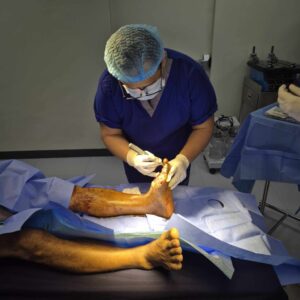The hip joint is one of the most important joints in the human body, playing a critical role in movement, balance, and weight-bearing. This ball-and-socket joint connects the thigh bone, or femur, to the pelvis, allowing a wide range of motion including walking, running, sitting, and standing. Healthy hip joints make daily life seamless, but when problems arise, mobility and quality of life can be significantly affected. Many patients experience pain, stiffness, or instability that limits their ability to perform even simple activities. Addressing hip joint issues promptly can help restore movement and prevent further complications.
Hips and Knees Joint Restoration and Replacement Center in the Philippines has become a trusted destination for patients worldwide seeking affordable, high-quality hip joint care. For individuals from the USA, Australia, New Zealand, and the UK facing long wait times or high medical costs, the center provides world-class orthopedic services including advanced hip joint surgeries such as the Direct Anterior Approach (DAA) hip replacement.
Anatomy and Function of the Hip Joint
The hip joint is a ball-and-socket joint where the rounded head of the femur fits into the cup-shaped acetabulum of the pelvis. This unique structure allows for stability while enabling a wide range of motion. The joint is surrounded by strong ligaments, tendons, and muscles that support movement and protect the bones from excessive stress. Cartilage covers the ends of the bones, allowing smooth motion and cushioning the joint against impact.
The hip joint bears the weight of the upper body, making it one of the most heavily used joints in the body. Every step, twist, and bend relies on the proper functioning of the hip joint. Damage to cartilage, ligaments, or surrounding muscles can compromise joint function and lead to pain, stiffness, and decreased mobility. Maintaining the health of the hip joint is crucial for living an active, pain-free life.
Common Hip Joint Problems
Hip joint issues can arise from a variety of causes, ranging from age-related wear and tear to traumatic injuries. Osteoarthritis is the most common condition affecting the hip joint, characterized by the gradual breakdown of cartilage, which leads to pain, stiffness, and reduced mobility. Rheumatoid arthritis and other inflammatory conditions can also damage the hip joint, causing chronic discomfort.
Hip fractures, often caused by accidents or falls, can severely impact joint function and mobility. Labral tears, hip impingement, and bursitis are additional problems that may affect the hip joint, causing pain and limiting motion. Patients experiencing these conditions often notice difficulty climbing stairs, standing from a seated position, or walking long distances. Persistent hip joint pain is a clear signal to seek professional evaluation to prevent further deterioration.
Diagnosing Hip Joint Issues
Accurate diagnosis is essential for effective treatment of hip joint problems. Orthopedic specialists begin with a detailed physical examination, assessing range of motion, strength, and joint stability. Imaging studies such as X-rays, MRI scans, or CT scans provide detailed views of the hip joint, highlighting cartilage loss, bone changes, or structural abnormalities.
Early diagnosis of hip joint conditions allows for timely intervention, which can include non-surgical management or surgical procedures. Hips and Knees Joint Restoration and Replacement Center emphasizes precise evaluation to develop a treatment plan tailored to each patient’s needs. International patients benefit from virtual consultations, ensuring proper assessment before traveling for surgery.
Treatment Options for Hip Joint Problems
Treatment for hip joint issues depends on the severity of the condition and the patient’s overall health. Non-surgical options include physical therapy, anti-inflammatory medications, joint injections, and lifestyle modifications to reduce strain on the hip joint. These approaches can relieve pain and improve mobility, but they may not be sufficient for advanced joint degeneration.
Surgical intervention is often the most effective solution for severe hip joint damage. Hip replacement surgery replaces the damaged joint with a prosthetic implant, restoring function and reducing pain. At Hips and Knees Joint Restoration and Replacement Center, advanced minimally invasive techniques such as the Direct Anterior Approach (DAA) allow for smaller incisions, faster recovery, and less post-operative discomfort. DAA hip replacement preserves muscles around the hip joint, enabling patients to regain mobility more quickly compared to traditional approaches.
Hip Replacement Surgery Abroad
For international patients seeking affordable and high-quality care, the Philippines offers an excellent option for hip joint surgery. Hip replacement procedures at Hips and Knees Center are 50-70% less expensive than in the USA, Australia, New Zealand, and the UK, without compromising surgical quality or patient safety. Shorter wait times allow patients to schedule surgery within a few weeks of consultation, significantly reducing the time spent in pain.
The center provides comprehensive support for international patients, from pre-surgery evaluation to post-surgery rehabilitation. Comfortable accommodations, transportation assistance, and personalized care plans ensure a smooth experience for patients traveling for hip joint surgery. Many patients report not only restored mobility but also a renewed sense of independence and quality of life.
Recovery and Rehabilitation for Hip Joint Surgery
Recovery after hip joint surgery is a critical phase that determines long-term outcomes. Hips and Knees Center offers personalized rehabilitation programs that include guided physical therapy, exercise plans, and telemedicine follow-ups. Patients learn safe techniques for walking, sitting, and performing daily activities to protect the hip joint while regaining strength.
Minimally invasive approaches like DAA reduce post-operative pain and allow patients to start rehabilitation sooner. Most patients achieve significant improvement in mobility within weeks, returning to normal activities with greater comfort and confidence. Ongoing exercises and lifestyle modifications help maintain the health of the hip joint and prevent future problems.
Patient Stories: Real Results from Hip Joint Surgery
Patients at Hips and Knees Center have experienced life-changing results after hip joint surgery. Many arrive with chronic pain and limited mobility, only to leave with restored function and renewed independence. Direct Anterior Approach hip replacement allows patients to recover faster and return to everyday activities with minimal disruption. International patients consistently praise the center for its compassionate care, skilled surgeons, and smooth recovery process.
One patient described her journey from struggling with hip joint pain to walking comfortably and participating in family activities without discomfort. Stories like these illustrate how effective treatment can dramatically improve quality of life for those living with hip joint problems.
Tips for Maintaining Hip Joint Health
Even after hip joint surgery or treatment, maintaining joint health is essential. Patients should engage in low-impact exercises such as swimming, cycling, and walking to strengthen muscles supporting the hip joint. Maintaining a healthy weight reduces pressure on the joint and prevents further degeneration. Stretching and flexibility exercises can also improve range of motion and prevent stiffness.
Regular check-ups with an orthopedic specialist help monitor the condition of the hip joint and address any emerging issues promptly. Paying attention to joint health and adopting protective habits ensures long-term mobility and comfort.
Takeaway
The hip joint plays a vital role in mobility and overall quality of life. Addressing hip joint problems promptly, whether through conservative treatment or advanced surgical options, can restore function and reduce pain. Hips and Knees Joint Restoration and Replacement Center provides international patients with expert care, affordable procedures, and minimally invasive hip joint surgeries such as Direct Anterior Approach hip replacement. With proper treatment, rehabilitation, and lifestyle measures, patients can regain independence, enjoy daily activities, and live life without the limitations imposed by hip joint issues.
Frequently Asked Questions About the Hip Joint
What is the hip joint, and why is it important?
The hip joint is a ball-and-socket joint connecting the thigh bone to the pelvis. It supports weight-bearing, enables movement, and plays a crucial role in daily activities such as walking, sitting, and climbing stairs.
What are common problems that affect the hip joint?
Osteoarthritis, hip fractures, labral tears, hip impingement, and bursitis are common conditions affecting the hip joint. Symptoms often include pain, stiffness, swelling, and limited mobility.
How is a hip joint problem diagnosed?
Diagnosis typically involves a physical exam and imaging studies such as X-rays or MRI scans. These tests allow orthopedic specialists to evaluate joint structure, cartilage condition, and bone health.
When is hip replacement surgery necessary?
Hip replacement is recommended for patients with severe joint damage, chronic pain, or significant mobility limitations that do not respond to non-surgical treatments.
What is the Direct Anterior Approach (DAA) for hip replacement?
DAA is a minimally invasive hip replacement technique that preserves muscles around the hip joint, resulting in faster recovery, less pain, and improved post-surgery mobility.
How long does recovery take after hip joint surgery?
Recovery time varies by patient, but minimally invasive approaches like DAA often allow patients to resume normal activities within weeks. Physical therapy and guided rehabilitation are essential for optimal outcomes.
Why choose hip joint surgery abroad?
Countries like the Philippines offer high-quality orthopedic care at a fraction of the cost in Western countries. Short wait times, skilled surgeons, and comprehensive post-operative care make it a viable option for international patients.











